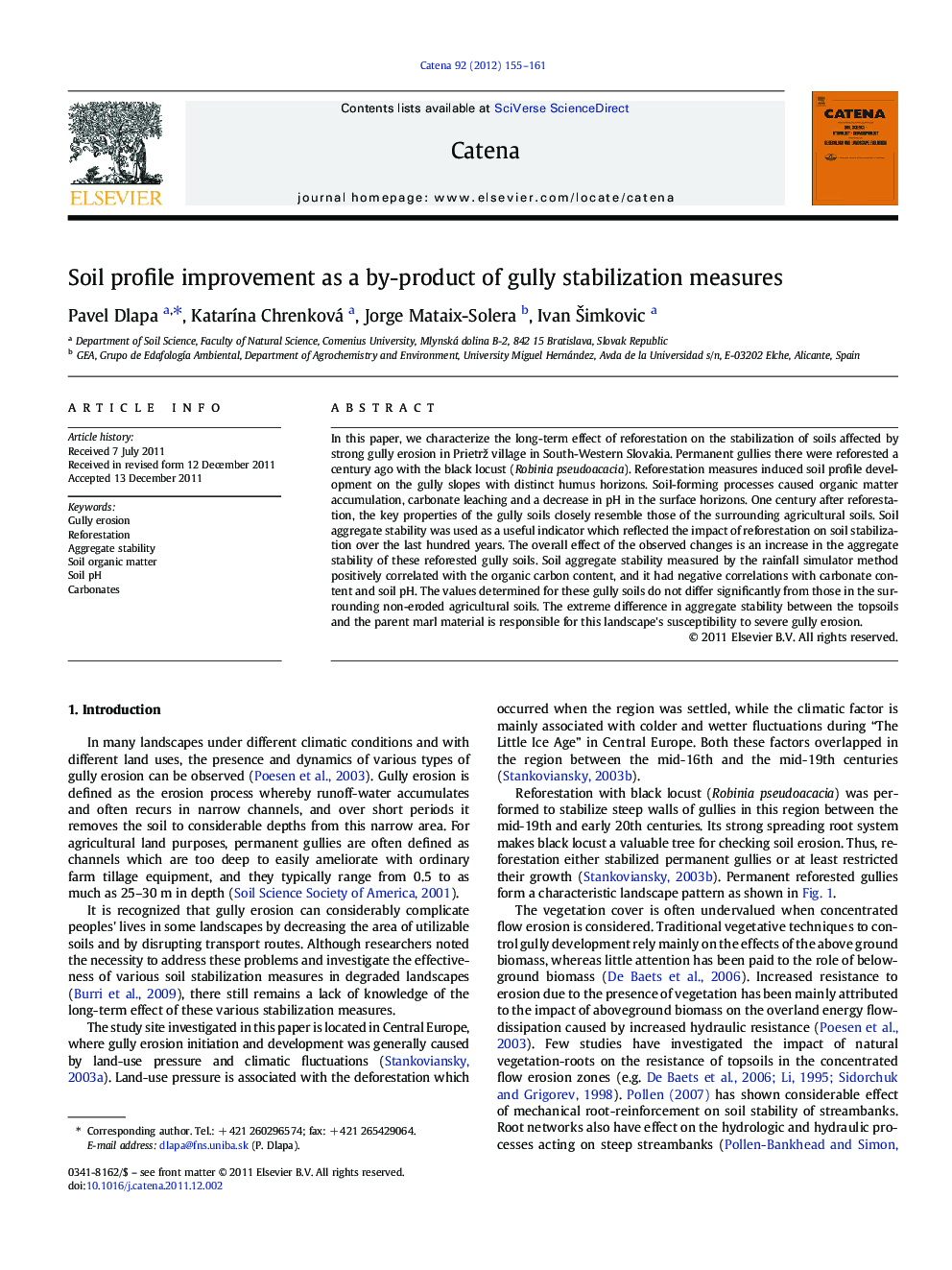| Article ID | Journal | Published Year | Pages | File Type |
|---|---|---|---|---|
| 4571898 | CATENA | 2012 | 7 Pages |
In this paper, we characterize the long-term effect of reforestation on the stabilization of soils affected by strong gully erosion in Prietrž village in South-Western Slovakia. Permanent gullies there were reforested a century ago with the black locust (Robinia pseudoacacia). Reforestation measures induced soil profile development on the gully slopes with distinct humus horizons. Soil-forming processes caused organic matter accumulation, carbonate leaching and a decrease in pH in the surface horizons. One century after reforestation, the key properties of the gully soils closely resemble those of the surrounding agricultural soils. Soil aggregate stability was used as a useful indicator which reflected the impact of reforestation on soil stabilization over the last hundred years. The overall effect of the observed changes is an increase in the aggregate stability of these reforested gully soils. Soil aggregate stability measured by the rainfall simulator method positively correlated with the organic carbon content, and it had negative correlations with carbonate content and soil pH. The values determined for these gully soils do not differ significantly from those in the surrounding non-eroded agricultural soils. The extreme difference in aggregate stability between the topsoils and the parent marl material is responsible for this landscape's susceptibility to severe gully erosion.
► We characterize the long-term effect of reforestation on the stabilization of gully soils. ► Soil aggregate stability was used as a useful indicator of soil stabilization. ► The overall effect of reforestation was an increase in the aggregate stability. ► Reforestation with the black locust stabilized the walls of the permanent gullies.
